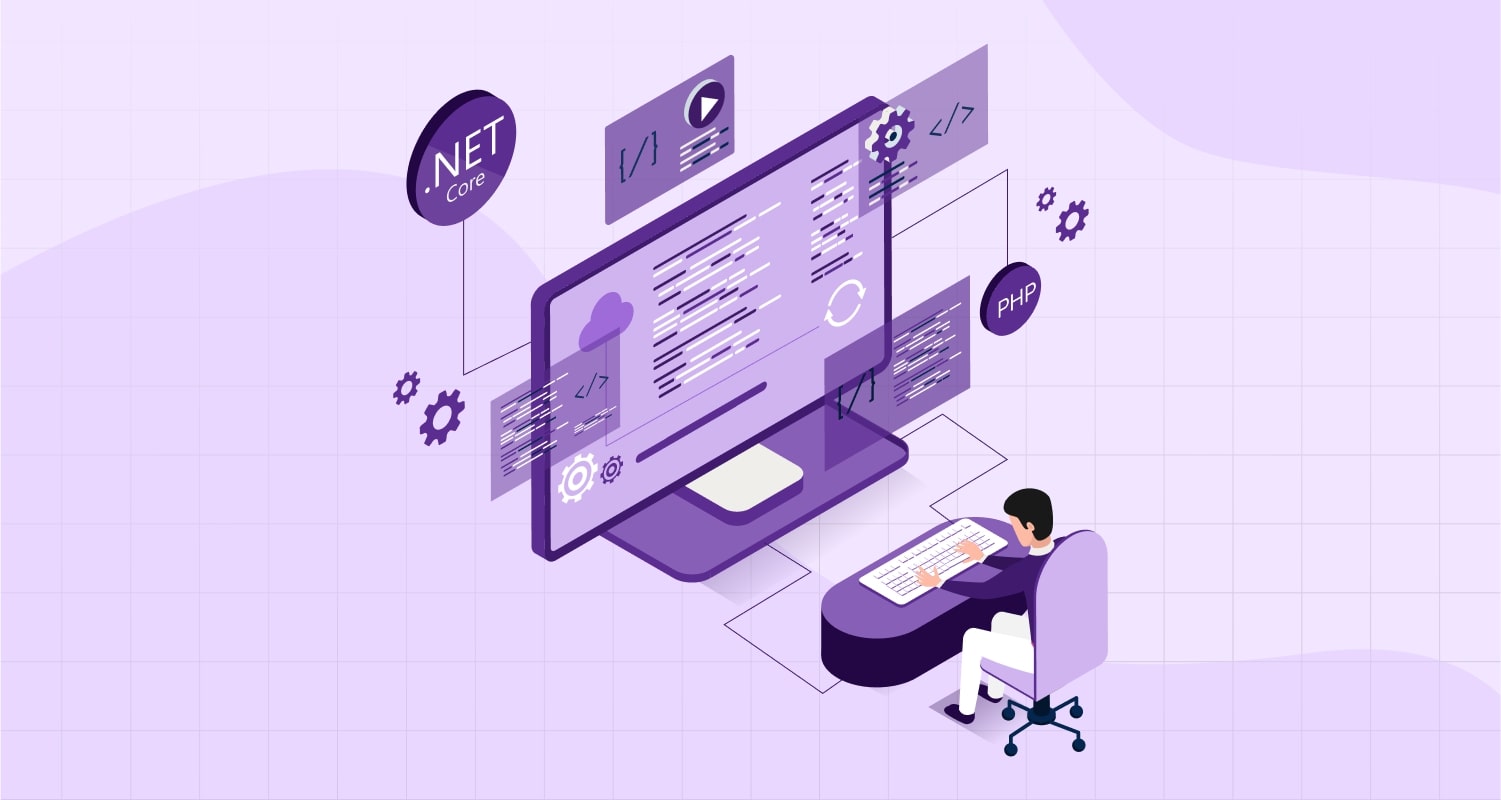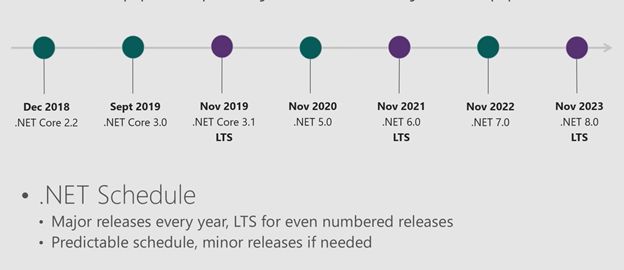Keep up with the most recent developments in the rapidly changing world of software development to remain competitive and create cutting-edge solutions. .NET continues to influence application development as one of the most potent and flexible programming platforms. The future of .NET Development programming presents intriguing possibilities because of Microsoft’s unwavering dedication to innovation. This thorough manual looks into the most Latest trends in .NET development, examining new features, recommended practices, and the hopeful path it is taking.
Current Development Trends in.NET
The latest trends in .NET development may now be used by developers in the .NET environment, which is something they have been eagerly anticipating since the launch of.NET 6. There are several upsides to developing apps using this free and portable Framework.
- Flexibility Across Operating Systems: .NET 6’s support for Windows, Linux, and macOS enables developers to build desktop apps and platforms accessible to users of many operating systems.
- LTS (Long-Term Support): According to Microsoft, the Long-Term Support (LTS) version of.NET 6 guarantees stability and continuous assistance for programs throughout their lifespan.
- Integrated Mobile Application Development: The development process is streamlined and takes less time and effort with .NET 6 since developers can use the same code base to build Windows, Android, and iOS mobile applications. Most of the Software Development Services are following this trend.
- Seamless Cloud Service Integration: The Framework simplifies the development, deployment, and utilization of cloud services, enabling programmers to capitalize on the power of the cloud while preserving backward compatibility with already-existing cloud platforms.
- Integration of Machine Learning: Machine learning has emerged as a crucial tool for improving businesses in the twenty-first century. To take advantage of this quickly expanding market, .NET 6 gives developers the ability to create apps that are enhanced with various algorithms, voice being processed, and machine learning models.
- Rapid Full-Stack Framework: With the new language capabilities introduced in C# 10, developers may create quicker and smaller microservices using a less expensive and more efficient framework: .NET 6.
- Integration for Improved Cooperation: .NET 6 introduces software development kits (SDKs), basic libraries, and runtimes, all of which encourage the exchange of code and the cooperation of developers working on various applications and platforms. The integration of Visual Studio allows for intelligent code enhancing, diagnostics, quick reloading, and new git tools, all of which contribute to an improved development experience.
Best Practices for .NET Development

Building cutting-edge apps using .NET Core requires keeping up with the most recent developments in the ever-changing field of software development. To guarantee high-performance, adaptable, and secure applications, embracing the future of best practices for .NET development requires adhering to best practices and investigating new technologies. Let’s examine some crucial factors that any developer should take into account:
- Select the Correct Version: Making the right .NET Core version choice lays the groundwork for success. Updating your development environment allows you to take advantage of speed and security improvements and guarantees compatibility with your current systems. For a more seamless development process, choose a well-supported and maintained version or hire .NET Development Services.
- Scalability in the Design: When developing applications, it is essential to keep scalability in mind. Your app can withstand increasing traffic and demand by utilizing .NET Core’s modular design and minimizing single points of failure. Scalability is further improved by distributing the demand among different servers via load balancing.
- Take Performance Into Account: Your application’s performance directly influences how well it works. Speed and responsiveness may be increased by using efficient algorithms and optimizing data flows. To improve overall performance, avoid resource-intensive activities and use appropriate data structures.
- Ensure Security: It is important to create secure apps. You have access to a wealth of security capabilities with .NET Core. Input validation should be given top priority to avoid vulnerabilities and exploitation. To prevent unauthorized access and shield your app from dangers like cross-site scripting (XSS) and SQL injection, encrypt important data such as passwords and financial information.
- Observe Coding Standards: Coding standards must be followed to maintain code quality. Developers may continuously implement best practices for .NET development using the tools provided by .NET Core. Scalable and maintainable programs benefit from consistent naming standards, simple and clear code, and extensive documentation.
- Automate Testing: Creating high-quality apps requires automation of the testing process. Use the testing resources provided by .NET Core to execute unit, cooperation, and performance tests. Automated testing advantages include early issue identification, quicker development, and more maintainable code.
- Use Dependency Injection: This effective design pattern encourages modularity, simple maintenance, and testability. .NET Core’s native support for dependency injection makes it easy to improve code modularity and testability by injecting requirements into classes and components.
- Embrace Logging: .NET Core offers several tools to monitor events and failures properly. Logging is essential in application development. The performance and resource utilization of your application may be debugged, troubleshot, and monitored by using best practices for logging.
- Establish an Exception Handling System: Exception handling is crucial to creating dependable applications. Your application may gracefully manage problems and deliver insightful error reporting with the feature-rich exception-handling features of .NET Core, assuring ongoing functioning and increased stability.
- Use Configuration Files: Flexible and maintainable programs are built on configurations. You may easily modify your application to meet changing needs without hard coding, thanks to the simplicity of handling configuration settings in .NET Core. This makes deployment and upkeep across many settings simpler.
IntelliSourceis a leading software development company that uses the best practices to offer quality services.
Future of .NET Development
Create future-proof applications and satisfy the requirements of the current dynamic software environment by keeping these best practices in mind and investigating the latest trends in .NET development. Utilize the full potential of .NET Core for your applications by staying innovative and up-to-date.

Future of .NET Development will have an exciting future as Microsoft focuses on making .NET Core a more powerful and flexible platform. The .NET Framework is gradually being replaced. Each year, newer versions of .NET Core bring significant improvements. Microsoft’s commitment to enhancement is evident in the planned releases of .NET Core 7.0 and 8.0, scheduled for November 2022 and 2023, respectively.
The future of .NET development holds great excitement and promise, driven by continuous advancements and ongoing innovation.
- .NET strives to enhance its cross-platform compatibility, enabling developers to effortlessly deploy their applications on various operating systems. This expansion ensures seamless integration and accessibility across different platforms.
- By implementing optimizations and improvements, the performance of .NET applications can be significantly enhanced. This leads to faster and more efficient execution, benefiting users with improved overall experience
- Cloud-native integration is a concept that emphasizes the seamless integration of .NET with cloud technologies. This enables developers to effortlessly create scalable and resilient applications designed for the cloud environment.
- The integration of Internet of Things (IoT) into .NET is set to revolutionize the development of IoT-driven solutions. Embracing this technology
- The open-source community for .NET is poised for growth, leading to increased collaboration and community-driven enhancements.
Exploring New Features in .NET
Microsoft’s robust .NET development framework empowers programmers to create applications for multiple operating systems. This framework, compatible with Windows, macOS, iOS, and Android, offers new features in its latest version, .NET 7. These enhancements simplify the process of developing robust and dynamic apps.
.NET 7 offers a comprehensive development environment with its key components. These components, namely .NET Runtime, .NET Framework, .NET Core, .NET Standard, .NET Native, and .NET CLI, provide all the necessary tools for developers.
Notable .NET 7 features include:
- Performance Improvements: JIT compiler optimizations included in .NET 7 speed up code compilation and improve application performance. The platform also facilitates cloud-native development, making it easier to construct cloud-deployable apps.
- Security Enhancements: With security as a top priority, .NET 7 adds the .NET Security Guard, a collection of tools that help developers find and fix security flaws. For applications built on.NET Core, the.NET Core Runtime strengthens application security even further.
- Capabilities of AI and ML: The .NET 7 platform introduces the ML.NET library, which offers machine learning techniques and frameworks for developers to construct AI-driven apps, underscoring the rising need for AI and ML-powered applications. The ML .NET Model Builder makes it simple to create models quickly and train them using pertinent data.
- Developer Tools: To improve the developer experience, .NET 7 provides several new tools. Code authoring is eased by the extensions available in the Visual Studio Code editor. Additionally, the .NET CLI’s command line interface makes project administration simpler overall.
- Multi-Platform Support: With.NET 7, programmers have a simpler time creating programs running on several platforms. They may create code that is cross-platform by utilizing .NET Core and .NET Standard. A further feature of.NET Native is the ability to compile .NET code into native code that can run on various systems.
- Cloud-Native Development: .NET 7 simplifies the creation of cloud-native applications. The lightweight .NET Core Runtime enables programs to operate in the cloud without extra software installation, and the cloud-optimized .NET Core enables simple deployment to cloud environments.
Latest Trends in .NET development continue to alter the options for application development as the technological environment changes. .NET continues to be at the vanguard of contemporary development, from new features that improve speed and security to AI and ML capabilities that open doors to inventive solutions. Developers that follow best practices for .NET development produce high-quality, scalable, and maintainable software. The future holds exciting possibilities for customers, companies, and developers alike, and the potential of .NET programming seems endless. Let’s explore, innovate, and fully utilize .NET as we go ahead to help build the future of software development.

